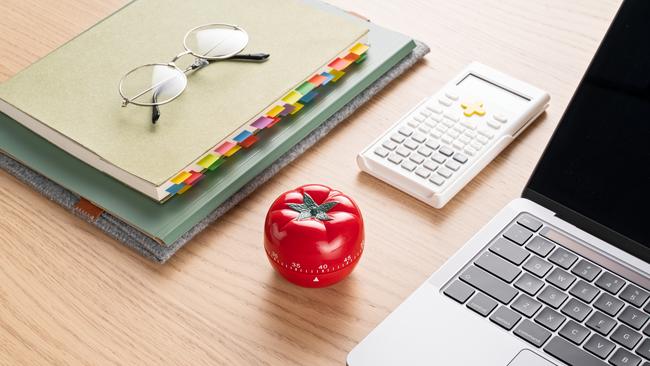How a timer (not your phone’s) can help you work more efficiently
Productivity experts say a good old hourglass or pinging kitchen timekeeper can improve your focus - especially if it is a well-designed example like one of these.

I’ve been my own boss since 2017, but my procrasta-holic tendencies were getting the best of me until I laid them off with one humble tool: a kitchen timer. I set it for a chunk of time during which I need to focus, then reward myself with a break.
The popular Pomodoro Technique -- a time-management tool that efficiency consultant Francesco Cirillo developed in the late 1980s, so named for a cooking timer shaped like a tomato (”pomodoro” in Italian) -- suggests 25-minute bursts of work followed by five-minute breaks.
But productivity expert Ann Gomez, author of “Workday Warrior” suggests customising your blocks of time. “I don’t think we need to box ourselves into a consistent time for every task,” she said.
I’ve found I can more easily dispense with my most cringe-inducing chores, such as chasing overdue freelance fees, if I’ve allocated 15 minutes or even a zippy five -- rather like ripping off a Band-Aid.

“If you think [a task] will take you only five minutes, set the timer for that and then basically have a race with yourself,” said Elizabeth Grace Saunders, a time-management coach in Farmington Hills, Mich.
“You want enough pressure that you focus, but not so much pressure that it feels like, ‘Oh, there’s no way that I could get this done.’”
Such concentration aids grow more essential as the onslaught of workday distractions increases. Saunders has observed a huge increase in external stimuli since she became a time-management coach in 2009, she says, and this has shifted the way our brains are trained.
“We tend to build the strongest connections in the direction of what we do most, so if that’s towards distraction -- like pinging devices -- it becomes harder and harder to focus, because the neuro connections in our brain [that facilitate] focus are weakened or just not practised at all.”
To the rescue: devices that may or may not be shaped like a tomato. “It takes an abstract concept of time and turns it into something more concrete,” said Saunders, who likens the mind training that timers offer to working with a coach to strengthen your arm or leg muscles.
While you work against time, be sure to turn off phone notifications for emails, texts, news and social media. “You won’t forget to check emails and messages -- we’re all far too hooked into the dopamine reward,” said Gomez.
“Our temptation to check is stronger than the temptation associated with tobacco or alcohol.” Giving yourself a prize once the timekeeper dings is said to aid motivation. But I learned that my go-to carrot -- five minutes of my latest television-show binge -- wasn’t actually doing me many favours.
“Even though checking your phone or watching a TV show might be fun, it actually isn’t a rest for your brain,” said Saunders, who recommends a quick walk, stretching and deep breathing or fetching a glass of water instead (even if it’s hard to see water as a tempting “prize”).
“If you can give yourself some brain rest throughout the day, you won’t be as drained at the end, and you’ll have more energy for whatever you want to do after work.” For a Good-Looking Time …

Fun and handsome analog devices may make you more likely to block off productive chunks of time, say experts Forget your phone. When trying to block out blocks of productive minutes, I found using my iPhone timer far too distracting. Even switching the device to “focus” mode -- which filters alerts and responds to incoming messages with a sort of Do Not Disturb notification -- didn’t work. Each time I checked my remaining time, I succumbed to the urge to toggle over to gossipy texts or Instagram.
While ultimately you need to find what works for you, “a well-designed timer that allows us to park our distracting devices out of sight can be quite useful,” said Gomez.
In addition, visual representations of time, such as an hourglass, make an abstract concept concrete, said Saunders, adding that we’re more likely to use well-designed timers than homely ones. “This can help with pacing yourself and creating a positive sense of urgency.”





To join the conversation, please log in. Don't have an account? Register
Join the conversation, you are commenting as Logout